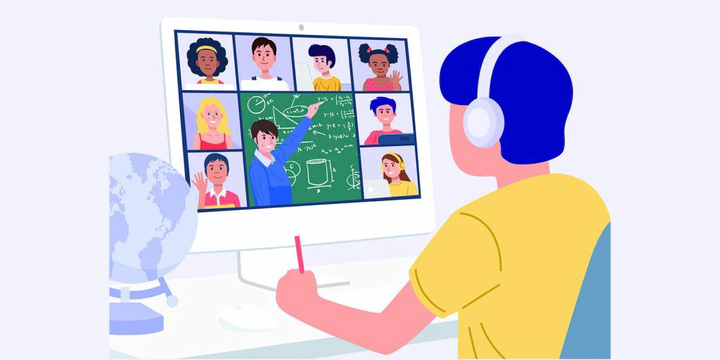Using Callysto data visualizations in the classroom

Part One: How and why to incorporate data visualizations into your lessons
This blog post was written by Callysto team member Dr. Verena Roberts. Dr. Roberts is a Callysto Education Specialist and a former online high school teacher with Rocky View Schools, in Alberta, Canada (she stepped away from her teaching role in January 2021).
During my time as a high school English teacher, I was frequently looking for ways to integrate data literacy into my classroom in a meaningful and authentic way. This is why the Callysto data visualizations have been intentionally designed to integrate computational thinking and data science into interdisciplinary subjects.
I believe these data visualizations can be used to communicate critical thinking skills in subjects like English, in a user-friendly way.
Why I used data visualizations
Across the English Language Arts curricula in the Alberta Program of Studies, students are expected to engage with and create different forms of texts, including multimedia texts.
According to the Program of Studies, multimedia texts can include:
“demonstrations and oral presentations, videos and films, graphic novels and cartoon strips, plays, drum dancing, and internet websites. Any text that combines an oral component with a visual component; a print component with an oral component; or a print component with a visual component is a multimedia text. Many multimedia texts combine components of all three text types — oral, print and visual — to achieve their effects.”
In addition, senior high school students must be able to communicate in a variety of contexts, for a variety of purposes, with a variety of audiences, and given a variety of situations.
I was looking for a way to directly connect multimedia to text, as well as encourage students to consider the data when they communicate their understanding of the spaces in which they learn.
How I used the data visualizations
When I taught the ELA 20-2 (English Language Arts) class, students were asked to reflect upon a weekly “Provocation” that was added to the course blog, as part of their writing development.
The course blog was meant to model what an ePortfolio could look like in a high school literacy context. The students were asked to create an ePortfolio (using Google Sites), then add their weekly personal response to the questions provided by the teacher in the provocation.
The course blog for my class was called #WalkMyWorld.
The provocations were intended to reflect upon the wide range of ways we (as humans) communicate with each other. These included videos, poetry, images, how-to manuals and, in this case, a data visualization.
I wanted to ensure that the students met their media literacy course learning outcomes, while participating in emerging trends in literacy practices for K-12 learning environments.
The students were encouraged to respond and communicate their reflections in multiple ways, as outlined below.
How Did the ePortfolio Work?
The following directions were taken from the course blog:
Please make your own Google Site (click on the Digital Sandbox TAB at the top of the page for more information).
Share your Google Site with your teacher.
Every week, you will be given a "provocation" or “hook" to give you something to think about. You will react to the provocation in your ePortfolio in a variety of ways throughout the term. Consider the different ways to share your ideas:
- Blogging (how to create a Google Site)
- Writing (examples of how to write a Reflection)
- Podcasts (how to start a podcast)
- Journaling (using Google Docs to Journal)
- Sketch noting (getting started with Sketch noting)
- Videos (how to create a YouTube video, how to make a tutorial video)
- Songwriting (how to write song lyrics)
- Slam poetry (Steve Colman - Wanna Hear a Poem)
- Creating a Wikipedia page
- Graphic organizers (Google Drawings)
- Dance (how to choreograph your own dance)
- Photo essays (steps for creating a photo essay, how to create a photo essay)
- "How-To Handbook" writing - (technical writing tips, online course, writing in the workplace)
As a teacher, I was frequently inspired by the different ways students responded to my weekly provocation. When teaching online, it is often difficult to develop relationships with students. But I found that I was better able to get to know the students through the creative means they chose to communicate with me.
Because I was part of the Callysto design team, I intentionally asked if we could consider creating data visualizations that would not only meet curricular outcomes through content, but through student interest. I realized I could connect the data visualization *to* my content though student voice and choice.
In the next blog post, I’ll go over an example of incorporating a video game data visualization exercise into an ELA 20-2 class.